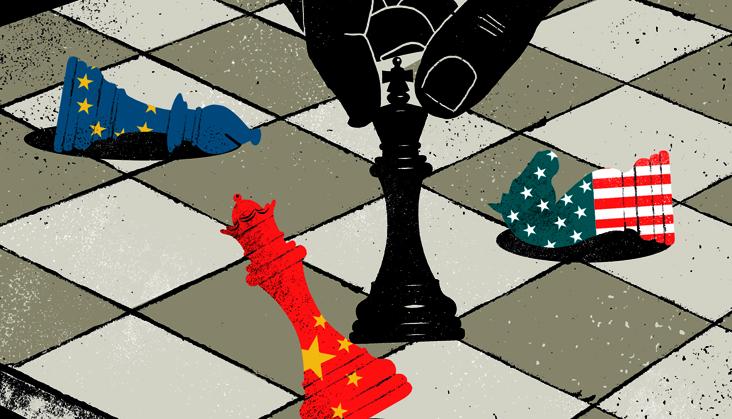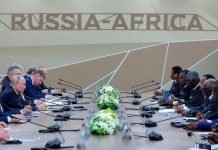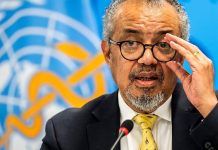Africa-Press – Lesotho. A daunting agenda – cash, conflict and jobs – awaited presidents and foreign ministers flying into Addis Ababa for an extraordinary summit of the African Union (AU) in early November.
The backdrop was the geo-economic shift over the past decade, establishing China as Africa’s leading trading partner, and India, Russia and Turkey coming up fast behind with the European Union (EU) states treading water and the US falling behind.
At the end of the summit’s agenda were a couple of items about Africa’s strategic partnerships: how should the continent get the most benefit out of this latest upsurge of economic and diplomatic interest.
There’s little agreement on tactics, let alone strategy. There are high hopes for the continent’s big idea, the African Continental Free Trade Area (ACFTA), representing a market of 1.2 billion and a $3trn economy.
But one of the tasks facing the summiteers in Addis is how to make this single market a practical reality. Some at the AU headquarters want to lead on negotiations and strategy, but others are pushing the interests of the regional economic organisations or even nation states.
Continental solidarity is being tested again in negotiations with the EU for a successor to the Cotonou treaty, dating back four decades. The ministers’ meeting in Addis was meant to resolve this.
The same argument, that Africa would get a better deal negotiating as a single unit, is playing out in dealmaking with other partners. Africa’s foreign suitors, old or new, would rather cut bilateral deals seeking advantages from differing local conditions.
Apart from the old picture of corporate penetration, the landscape shows that all of the great economic players are now in rivalry with one another when it comes to Africa.
Canny African policymakers could play one off against the other. But the plenitude of seemingly attractive and ‘quick offers’ have fostered a generation of lazy policymakers.
What is required is not only imaginative and diversified youth employment in creative and manufacturing industries, but imaginative and creative negotiators working in concert.
Certainly, the growing capacity of well-briefed African officials to negotiate in Mandarin with Chinese companies and officials has been a huge advance – but it’s not just China.
Only a technocratic and concerted response from Africa will succeed in the face of blandishments from all corners of the globe. Crafting that policy response has been made far tougher by the weakening of the international social contract.
The prospects of greater integration and supranational governance – whether through the United Nations (UN), International Monetary Fund (IMF), World Bank or continental organisations – have dimmed.
The nation state is on the rise again. The rules-based international order is declining. A new round of rivalries between the world’s biggest economies is a doubled-edged sword for African states.
The fightback of the West to retain its foothold in Africa gives rise to new posturing and new propaganda. Africa’s indebtedness to China is the subject of a great new scare.
In fact, African indebtedness to all external parties sees about 20% owed to China, about 35% to multilateral institutions such as the IMF and World Bank, and the remainder to private funds and banks.
The new trade wars are yet to hit China’s capital capacity as yet. Reserves of up to $3trn will insulate China’s economy from the first phase of US tariffs. China’s growth of 6.5% a year is something many Western countries would envy. Largesse towards Africa should continue.
Although the Forum on China-Africa Cooperation in September saw the usual promises of liquidity from Beijing, Zimbabwe’s President Emmerson Mnangagwa went away disappointed having failed to secure budgetary support.
Beijing, it seemed, wanted evidence of more stringent fiscal probity. And the trade imbalance between the two continents remains stark. Raw materials go from Africa to China.
Cheap manufactures go in the other direction. The fundamental flaws in this relationship can be fixed only by an increase in African manufactures. Otherwise, raw materials will be all Africa has to offer.
It’s not just China that has failed to encourage African manufacturing. The US insistence that it should send second-hand clothes duty-free to Africa is seen in Kigali as holding back Rwanda’s textile industry. Despite that quarrel over textiles, US policymakers have been responding belatedly to the rise and rise of China-Africa trade.
The Better Utilization of Investments Leading to Development Act, being pushed through Congress, will set up the US International Development Finance Corporation: an institution that looks a lot like some of China’s.
African leaders voted with their presidential jets this year, flying to the China-Africa summit in Beijing in far greater numbers than they attended the UN General Assembly a few weeks later.
That panicked the EU into hashing out a new Africa strategy in October. Individual member states have followed their own priorities. Germany’s Compact with Africa is a vehicle for European firms to succeed in Africa.
Companies like Nestlé profit, selling their products in ‘affordable’ miniature sizes – a technique also used by South African supermarket chains to attract township customers.
The declared objectives of Germany’s so-called Marshall Plan for Africa are to build production chains: to encourage manufacturing and diversify national economies.
When it comes to agro-industry, for instance, the bulk purchase of lands, the poorly regulated labour market and the marginalisation of youth seeking brighter futures make for a picture of ‘responsible’-seeming exploitation, but exploitation all the same.
‘Fighting hunger’, used as the rubric, becomes the entry point for agri-business.
At the centre of Europe’s plans for the continent are its negotiations with African states on migration. The new agreements are premised on raising living standards.
That’s a formidable project that requires the creation of 18 million new jobs by 2035 and spending of about $75bn a year on infrastructure. None of this will automatically constrain a population due to grow to 2.5 billion by 2050.
Where else should African policymakers look? There are many new players in the Africa game. Turkey has launched commercial flights to Somalia, a bold move. It has opened more than a dozen new embassies in Africa in the past decade and is getting enmeshed in the politics of the Horn of Africa.
For now, it is unclear whether Turkey’s interest will go beyond seeing Africa as a periphery to the Mediterranean and Middle East of President Recep Tayyip Erdoğan’s new ‘Ottoman’ dream.
For Africa’s policymakers, Turkey’s growing role is another important piece on a crowded chessboard. In what is looking like a 21st century scramble for Africa, playing one team off against another will stretch the resourcefulness of the continent’s diplomats.
For More News And Analysis About Lesotho Follow Africa-Press






